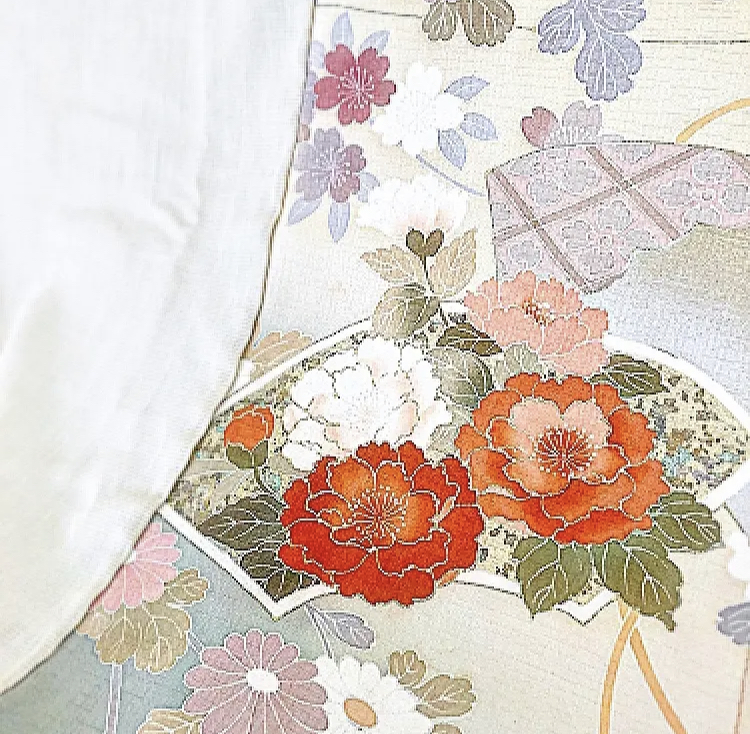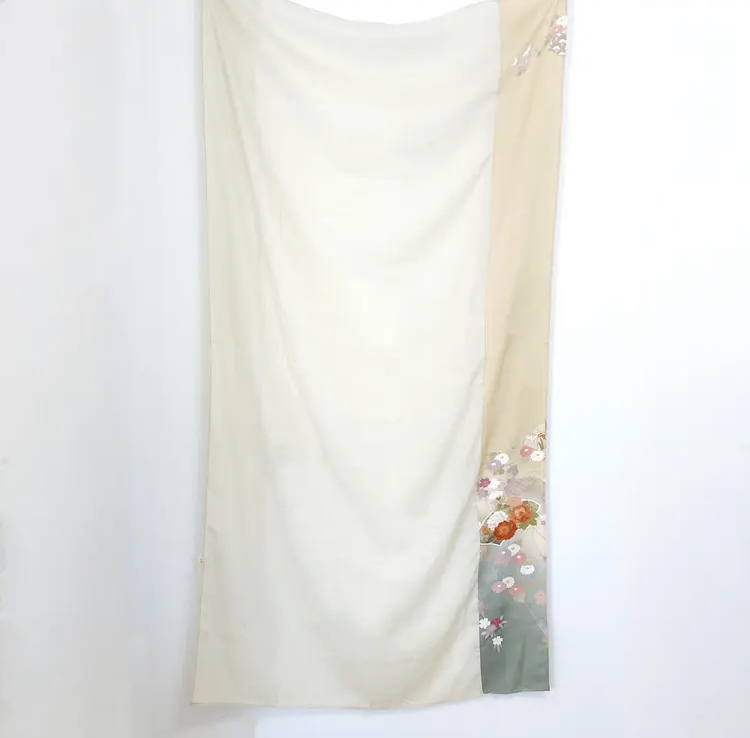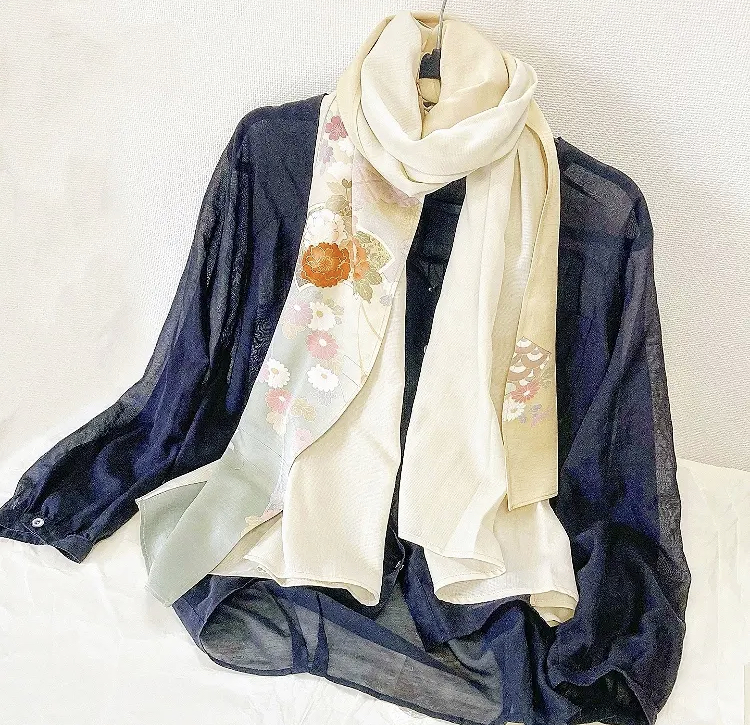

桜や牡丹などが描かれた柔らかな絹の手触りと淡い黄色〜緑のグラデーションが美しい訪問着をヒジャーブにしました。
★しっかり、かつサラリと涼やかな手触りの生地と合わせています。
★ご自宅で手洗いできます。
サイズ: 90cm ×166 cm
着物地:絹100%(注:下記②参照)
着物地以外:ポリエステル100%
日本製
【着物の種類】
こちらのヒジャーブは「訪問着」を使用しています。「訪問着」とは主にフォーマルな場などで着用する着物のことです。既婚独身問わず結婚式やパーティーなどの華やかな場で着用します。
【着物の状態】
紗紗 xiaxia hijab Japan ではアンティーク着物を使用したヒジャブを作っています。
アンティーク着物は状態の良いものを選び、2度クリーニング後全て解いて生地にし、ヒジャブに仕立てています。
最後にもう一度クリーニング後洗濯テストをして商品にしています。
【洗濯方法】
洗濯は手洗いをお勧めしています。洗濯方法の説明を同封させて頂きます。
【アンティーク着物とは】
大正〜昭和初期頃までに作られた状態の良い着物のこと。現代にはない大正モダン、昭和ロマンと言われるデザイン、時代を経てこなれた生地の感じ等が人気で、高価なアンティーク着物は数百万円もします。
【注意★必ずお読みください】
①アンティーク着物にはピンホールという小さな穴や長期保管による染み等がある場合がございます。
②大正〜昭和初期の着物には素材表示がございません。当時はポリエステル素材がない為絹、綿、麻が多いのですが、模様や手触りからその着物の時代、生地を推測するより方法が無く素材の判定は非常に難しい旨ご理解下さい。
③1枚ずつ完全に手作りです。
また薄いシフォン生地と着物生地を組み合わせているためどうしても多少の歪み ツレなどが生じる場合がございます。
仕立てのムラが気になる方はご遠慮下さい。
上記の件ご了承下さいませ。


The soft texture and kimono with cherry blossoms and peony are made into a hijab.
This kimono has a beautiful gradation of yellow to green.
★ It is combined with a slightly thicker fabric
★ it can wash hands.
Size: 90cm × 166cm
Kimono fabric: 100% silk (Note: see ② below)
Other than kimono: 100% polyester
made in Japan
[Kimono type]
This hijab uses “homongi”. “Houmongi” is a kimono worn mainly in formal occasions. Whether you are married or single, you can wear it at a gorgeous place such as a wedding or a party.
[Kimono condition]
Sasa xiaxia hijab Japan makes hijab using antique kimono.
The antique kimono is selected in good condition, cleaned twice, then unraveled to make a dough, and made into a hijab.
Finally, after cleaning again, we do a washing test and make it into a product.
[Washing method]
We recommend hand washing. I will enclose the explanation of the washing method.
[What is antique kimono]
Kimono in good condition made from the Taisho era to the early Showa era. The Taisho modern style, which is not found in modern times, the design called Showa romance, and the feeling of time-honored fabrics are popular, and expensive antique kimonos cost millions of yen.
[Caution ★ Please be sure to read]
(1) Antique kimono may have small holes called pinholes or stains due to long-term storage.
(2) There is no material label on kimono from the Taisho era to the early Showa era. At that time, there was no polyester material, so there were many silk, cotton, and linen, but please understand that it is very difficult to judge the material because there is no way to guess the fabric in the age of the kimono from the pattern and texture.
③ It is completely handmade one by one.
Also, because the thin chiffon fabric and kimono fabric are combined, some distortion may occur.
Please refrain from those who are worried about uneven tailoring.
Please note the above.

コメント